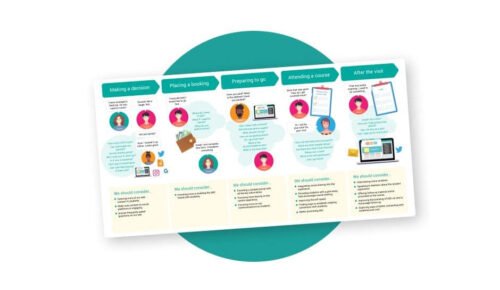Nowadays, data analytics is an important component of every modern business strategy, allowing companies to use data to make better decisions. However many difficulties prevent companies from completing Data Analytics Projects. Any company using data efficiently must comprehend these challenges and know how to overcome them. This blog examines typical problems encountered in data analytics initiatives and provides workable fixes. Additionally, obtaining a Data Analytics Certification can help professionals with the necessary skills to navigate these challenges effectively.
Table of Contents
- Data Analytics Project Challenges
- Conclusion
Data Analytics Project Challenges
Challenge 1: Data Quality and Consistency
Data quality is among the most remarkable problems in data analysis. Inaccurate, inconsistent or incomplete data thereby creates the phenomena of poor quality data resulting in misdirection in information and decision making. These data acquire inconsistency, especially in their formats and source which poses challenges in integrating and analysing data.
Organisations should establish strong data governance structures to guarantee excellent data quality. This comprises:
- Data cleaning:It is regularly eliminating duplicates, fixing mistakes, and adding missing information to your data.
- Standardisation: To guarantee uniformity across all data sources, establish data standards and formats.
- Validation: Ensure that data satisfies predetermined quality requirements by using automated technologies to validate it as it is collected.
- Training:Inform team members on the value of accurate data entry procedures and high-quality data.
Challenge 2: Integration of Diverse Data Sources
Numerous data sources are common including databases, spreadsheets, social media, and Internet of Things devices. Combining these various data sources into an organised dataset for analysis is difficult and time-consuming.
Take into consideration the following tactics to address data integration.
- ETL Tools: Extract, transform, and load [ETL] tools automate the process of obtaining data from various sources, converting it into a standard format, and then loading it into a data warehouse.
- APIs:Use APIs to make data transfer between various platforms and systems more accessible.
- Data Lakes:Data lakes store unprocessed data in its original format from various sources, enabling flexible integration and analysis.
Challenge 3: Scalability of Data Infrastructure
The amount of data that organisations produce increases along with their size. One of the biggest challenges is ensuring data infrastructure can grow to accommodate growing data loads without sacrificing performance.
To guarantee scalability, entities should:
- Cloud Solutions: Use on-demand, scalable resources provided by cloud-based data processing and storage solutions.
- Distributed Systems:Use frameworks for distributed data processing, such as Apache Hadoop or Apache Spark, to manage massive data processing over several nodes.
- Performance Monitoring:Monitor the data infrastructure’s performance and make necessary adjustments to manage increasing data volumes effectively.
Challenge 4: Data Security and Privacy
Data security and privacy concerns are important, particularly given the growing amount of sensitive data being handled. Maintaining data protection while following to laws like GDPR and HIPAA is difficult.
To address of data security and privacy issues, organisation should:
- Encryption:Data encryption safeguards sensitive information in transit and at rest.
- Access Controls: Role based access controls can be used to limit authorised personnel access to data.
- Compliance:Ensure data practices adhere to applicable data protection standards by keeping up with pertinent information.
- Security Audits: Conduct frequent security audits to find and fix such vulnerabilities.
Challenge 5: Lack of Skilled Personnel
Skilled data professionals such as data scientists, engineers, and analysts are in great demand. The lack of qualified employees may affect the success of data analytics programs.
To close the skills gap, businesses can:
- Training Programs: Workshops and training programs can be purchased to upskill current team members.
- Partnerships: To build talent pipelines and collaborate with colleges and training facilities.
- Hiring Strategies: Use creative hiring techniques to find and develop new talent, such as providing internships and apprenticeships.
- Outsourcing:Consider contracting some of your data analytics work to consultants or specialist companies.
Challenge 6: Interpreting and Communicating Results
Even with precise data analysis, stakeholders must understand the findings and be informed. Misinterpretation or inadequate communication might result in inaccurate conclusions and decisions.
To enhance the comprehension and dissemination of data analytics outcomes:
- Data Visualisation: Using technologies to produce interactive and user-friendly visual representations of data insights.
- Storytelling: To display data engagingly and clearly, hone your data storytelling abilities.
- Collaboration:Encourage cooperation between data teams and business stakeholders to guarantee that insights align with business goals and objectives.
- Documentation: To give context and clarity, keep complete records of the procedures and outcomes of data analysis.
Conclusion
Projects using data analytics have enormous potential to spur innovation and corporate expansion. However, they also bring difficulties that may obstruct development if not handled well. Organisations can successfully manage the intricacies of data analytics and realise the full value of their data by comprehending these issues and putting the solutions mentioned above into practice. For those looking to enhance their expertise, The Knowledge Academy offers comprehensive training in data analytics to help professionals tackle these challenges effectively.








































































































